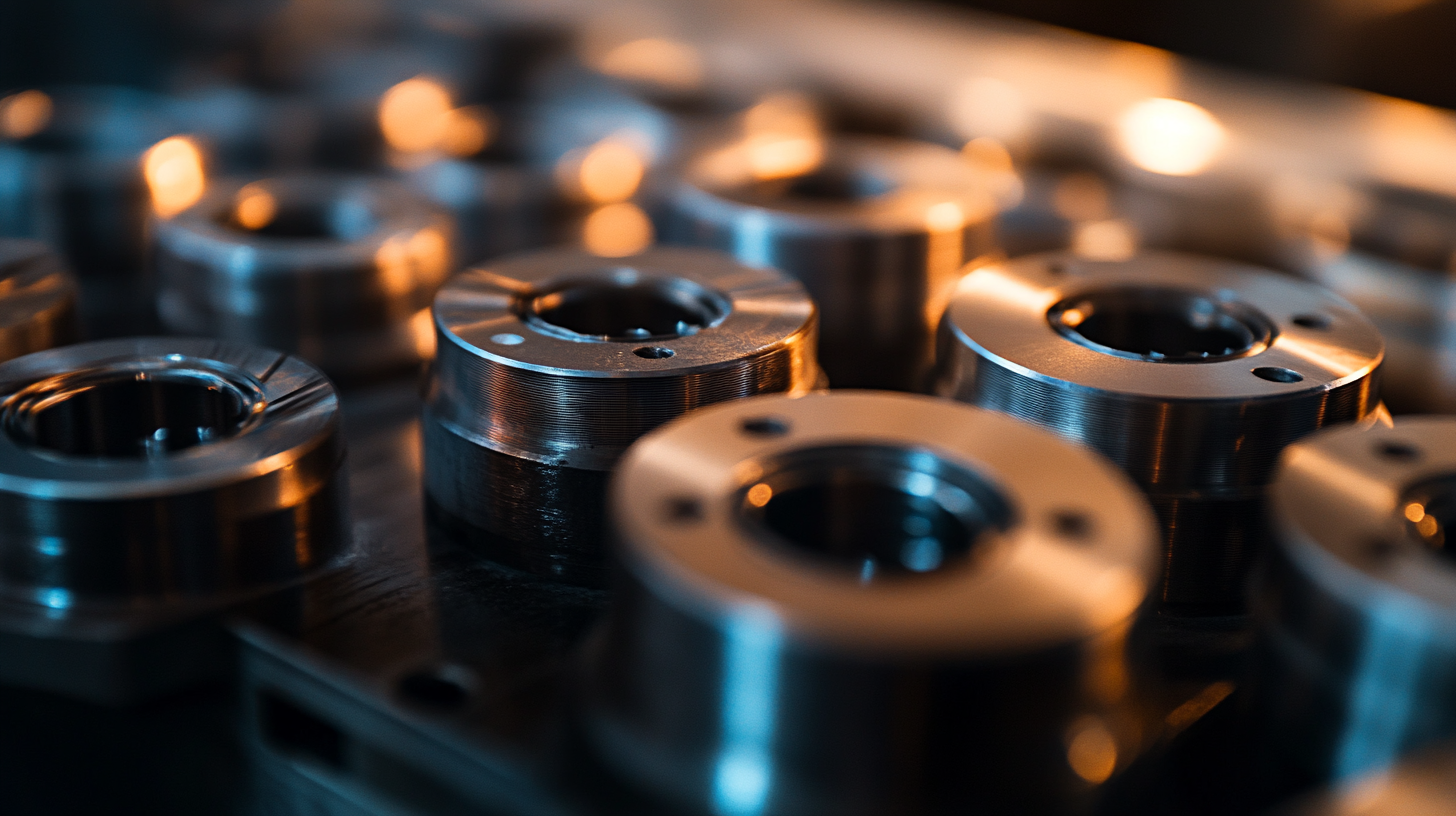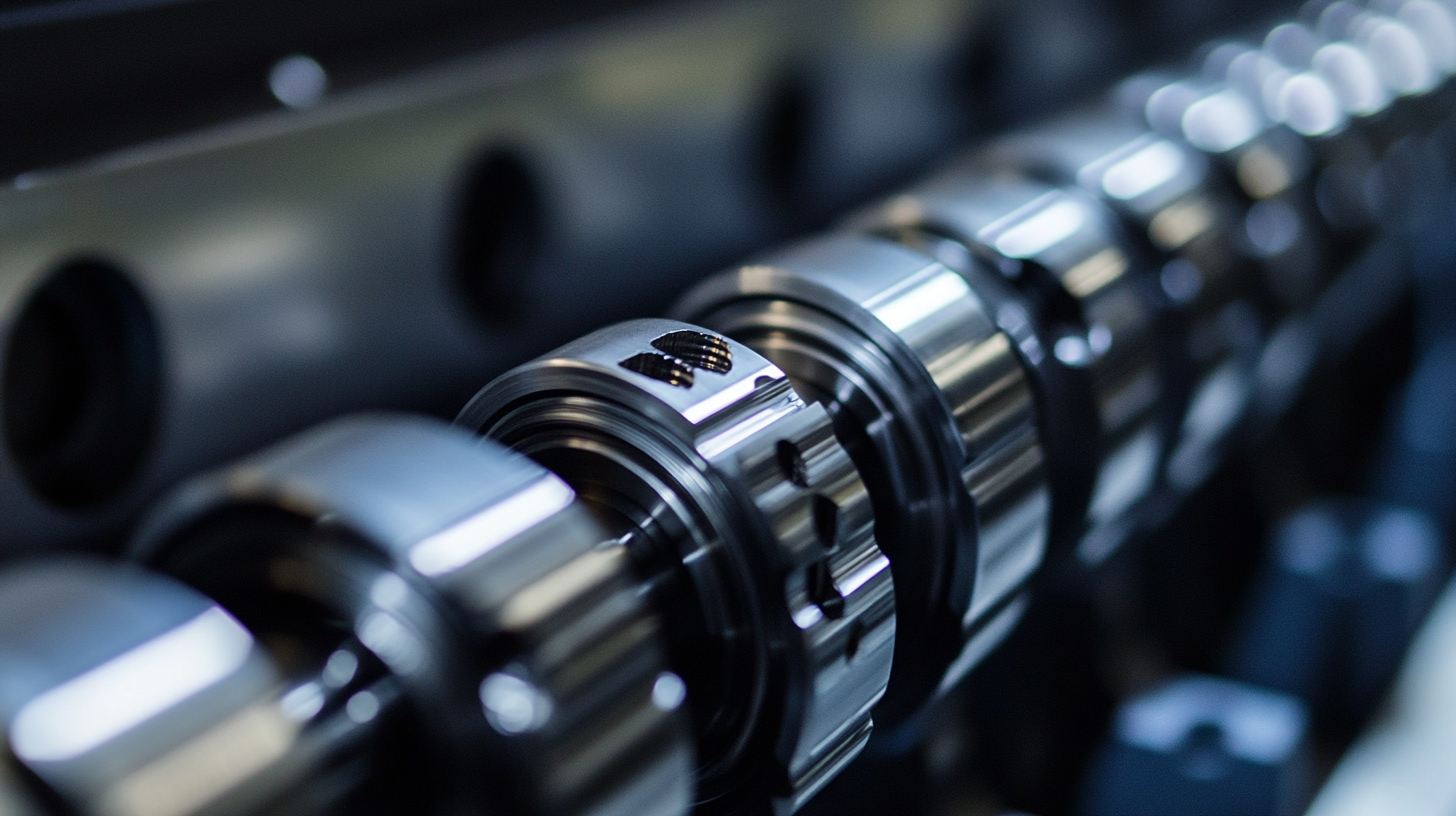
Ultimate Guide to Selecting Best Thread Rolling Dies for Your Manufacturing Needs
 In the competitive landscape of manufacturing, selecting the right Thread Rolling Dies is crucial for optimizing production efficiency and product quality. According to a report by MarketsandMarkets, the global market for threading tools, including thread rolling dies, is expected to reach $4.5 billion by 2025, driven by an increasing demand for precision-engineered components across various industries. Notably, thread rolling processes can produce stronger and more durable threads compared to traditional cutting methods, offering a significant enhancement in operational performance, which is quantified by a reduction in waste material by up to 30%. As manufacturers strive to meet rigorous industry standards while minimizing costs, understanding the intricacies of different die specifications becomes essential. This comprehensive guide aims to dissect the essential factors to consider when selecting the best Thread Rolling Dies tailored to your specific production requirements.
In the competitive landscape of manufacturing, selecting the right Thread Rolling Dies is crucial for optimizing production efficiency and product quality. According to a report by MarketsandMarkets, the global market for threading tools, including thread rolling dies, is expected to reach $4.5 billion by 2025, driven by an increasing demand for precision-engineered components across various industries. Notably, thread rolling processes can produce stronger and more durable threads compared to traditional cutting methods, offering a significant enhancement in operational performance, which is quantified by a reduction in waste material by up to 30%. As manufacturers strive to meet rigorous industry standards while minimizing costs, understanding the intricacies of different die specifications becomes essential. This comprehensive guide aims to dissect the essential factors to consider when selecting the best Thread Rolling Dies tailored to your specific production requirements.
Understanding the Importance of Thread Rolling Dies in Manufacturing
Thread rolling dies play a crucial role in the manufacturing process, particularly when it comes to creating durable and precise threads for various components. As industries continue to evolve, the need for advanced thread rolling techniques has become increasingly important. The cylindrical die forced throughfeed rolling process is one of the innovative solutions designed to enhance the production of gears while minimizing end-effect behavior commonly seen in standard radial-feed gear rolling. This technology not only improves the efficiency of the gear manufacturing process but also ensures higher precision, which is essential for the functionality of mechanical systems.
When selecting thread rolling dies, it's vital to consider the material and coating of the dies. Choosing high-quality materials can significantly impact the durability and performance of the dies, leading to longer production runs and reduced downtime. Additionally, ensure that the die's specifications align with the intended application, as this will directly influence the quality and accuracy of the threads produced.
Tip: Regular maintenance of thread rolling dies is essential for optimal performance. Implementing a routine inspection can help identify wear and tear, allowing for timely replacements or repairs. This proactive approach will not only extend the lifespan of the dies but also improve the overall quality of your manufacturing output.
Ultimate Guide to Selecting Best Thread Rolling Dies for Your Manufacturing Needs
| Die Type | Material | Max Diameter (mm) | Thread Profile | Recommended Applications |
|---|---|---|---|---|
| Flat Die | Tool Steel | 30 | Unified | General Fasteners |
| Cylinder Die | Cobalt Alloy | 35 | Metric | Automotive Components |
| Profile Die | High Speed Steel | 25 | Acme | Power Tool Manufacturing |
| Thread Rolling Die Set | Carbide | 50 | BSW | Heavy Machinery Parts |
| Segmented Die | Stainless Steel | 45 | NPT | Pipe Fittings |
Key Factors to Consider When Selecting Thread Rolling Dies
 When selecting the best thread rolling dies for manufacturing needs, several key factors must be taken into consideration. One critical aspect is the die material, as this significantly affects wear resistance and overall durability. High-speed steel (HSS) and carbide are popular choices; HSS offers a good balance of toughness and hardness, while carbide provides exceptional wear resistance, making it ideal for high-volume applications. According to industry reports, components produced with carbide dies can have a lifespan that is 2-3 times longer than those made with HSS.
When selecting the best thread rolling dies for manufacturing needs, several key factors must be taken into consideration. One critical aspect is the die material, as this significantly affects wear resistance and overall durability. High-speed steel (HSS) and carbide are popular choices; HSS offers a good balance of toughness and hardness, while carbide provides exceptional wear resistance, making it ideal for high-volume applications. According to industry reports, components produced with carbide dies can have a lifespan that is 2-3 times longer than those made with HSS.
Another important factor is the die design, particularly when dealing with complex geometries. The cylindrical die design is particularly advantageous in through-feed rolling processes, where standard radial-feed methods often struggle with end-effect behavior. Research indicates that utilizing a cylindrical die can reduce this issue, ensuring a more consistent finish and tighter tolerances on gears. Furthermore, optimizing die geometry is essential for reducing the roll force required, potentially lowering manufacturing costs by increasing throughput and minimizing energy consumption.
In addition, compatibility with existing machines and the production volume should also be carefully evaluated. High production rates may necessitate custom die designs tailored to specific applications, which can further enhance efficiency and quality control. By considering these key aspects, manufacturers can ensure they select the most appropriate thread rolling dies for their specific needs, leading to improved product performance and reduced operational costs.
Exploring Different Types of Thread Rolling Dies and Their Applications
When selecting the best thread rolling dies for manufacturing, it’s essential to understand the different types available and their specific applications. Thread rolling dies primarily come in two main categories: flat rolling dies and round rolling dies. Flat rolling dies are typically used for producing threads on flat surfaces, making them ideal for applications that require high precision, such as automotive and aerospace components. On the other hand, round rolling dies are more suited for producing continuous threads on cylindrical objects, offering a more efficient solution for high-volume production.
Recent advancements in thread rolling technology, such as the implementation of numerical modeling and finite element methods (FEM), have significantly improved the performance and accuracy of the thread rolling process. These innovations allow manufacturers to simulate thread rolling operations effectively, optimizing die design and enhancing product quality. Additionally, the emergence of specialized dies, such as those tailored for titanium alloy threaded fasteners, demonstrates the industry's commitment to meeting the unique demands of sectors like aerospace, where strength and weight reduction are critical. By understanding the various types of dies and their innovative applications, manufacturers can make informed decisions that align with their production needs.
The Impact of Industry Standards and Certifications on Die Selection
When selecting the best thread rolling dies for manufacturing, understanding the impact of industry standards and certifications is crucial. Compliance with standards such as ISO 9001, which emphasizes quality management systems, can significantly influence die selection. According to a report by the International Organization for Standardization, companies adhering to ISO standards experience up to a 20% reduction in operational costs, demonstrating the importance of utilizing certified dies in optimizing productivity and ensuring consistent quality.

Moreover, certifications from organizations like the American National Standards Institute (ANSI) and the American Society for Testing and Materials (ASTM) not only guarantee the reliability and performance of threading processes but also enhance customer trust. A study from the American Society of Mechanical Engineers highlights that 70% of buyers consider certification as a primary factor in their purchasing decisions. Thus, choosing dies that meet these rigorous industry standards not only improves performance but also aligns with customer expectations, ultimately contributing to a company’s competitive advantage in the market.
How to Ensure Compliance with Import and Export Regulations for Thread Rolling Dies
When selecting thread rolling dies for your manufacturing operations, ensuring compliance with import and export regulations is critical to avoid legal complications and enhance efficiency. Manufacturers should start by familiarizing themselves with the specific regulations that apply to their products in both domestic and international markets. This includes understanding the standards set by organizations such as ISO and compliance with tariffs that may affect the cost of imported or exported dies. Consulting the appropriate regulatory bodies or industry associations can provide valuable insights and updates on these regulations.
In addition to understanding regulations, maintaining accurate documentation is essential for smooth international transactions. This includes preparing export licenses, invoices, and customs declarations that clearly detail the specifications and intended use of the thread rolling dies. Implementing a robust compliance management system can help ensure that all paperwork is in order and that the necessary certifications are acquired. By prioritizing compliance, manufacturers can not only streamline their operations but also build a reputable brand that is trusted in global markets.
